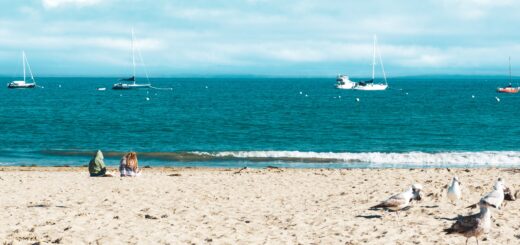A 5-Step Guide to an Easy Climate Change Activity (Plus 5 Interdisciplinary Extensions!)
Last week I wrote about an art activity involving polar bear habitats. In this post, I’ll give you step-by-step directions for using those habitat drawings in a climate change activity.
This activity is great for getting students out of their seats for a few minutes, and can benefit kinesthetic learners. And it’s easy, relatively short, and needs very little material!
Activity Set-Up
You’ll need a large-ish area to do the activity as students will be moving and jumping around. Outside on a grassy area works well in case anyone falls, but I’ve used covered hallways and classrooms with desks pushed to the side on rainy days.

Your students are going to be polar bears who are looking for food. Polar bears use the Arctic sea ice that forms in winter to hunt, which you can read more about from The Wildlife Society. As climate warms and sea ice shrinks, the animals are having a harder time finding enough food.
The polar bear habitat drawings from last week’s post will be the “ice floes” that your “polar bears” are going to use to travel around the Arctic hunting for seals and other food. Place the “ice floes” on the ground to form a chain of ice.
Game Directions
- Start with the “ice floes” close together, and have students move from one to the next “searching for food” until they reach the end of the chain.
- Now tell them that global climate is getting a little warmer and that means that there is less ice for them to use. Move the “ice floes” a little bit apart.
- Ask the students to walk from one “ice floe” to the next. It should be harder than the first time.
- Repeat this warming/less ice trend several times; each time the “ice floes” get further apart. You can also remove whole “ice floes” as it gets warmer!
- By the end, the students should not be able to jump from one “ice floe” to the next. They may have to “swim” (aka run) to get there. Discuss what this means for polar bears as they search for food and move around the Arctic.
Extensions and Modifications
This activity can easily be adapted to varying age groups from elementary school to college. Adding more variables—such as the size or number of “ice floes”—can increase complexity for older students. One extension that my students often like is adding a time limit to reach the next “ice floe.” If they can’t reach the next “ice floe” within the time limit, they have “drown” and don’t survive.

Similarly, you can incorporate additional elements to make the activity interdisciplinary or tie into other class topics. Here are a few examples:
- measure the distance between “ice floes”
- time limits can be measured
- calculate the amount of energy used in each round
- read a book, news article, or scientific article about polar bears or climate change before the activity
- write a summary of what they learned, or how they felt when they drown or weren’t able to find food



